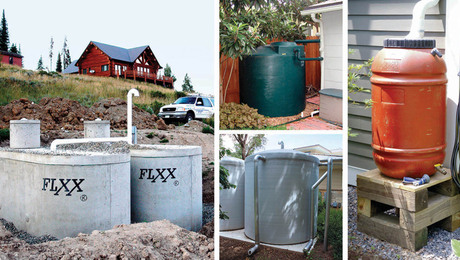Need help on covering outside of house
I am trying to decide what material to wrap my house in. I read the article recently in FH about putting solid sheets of foam insulation on the sheeting of a house prior to siding it. I really want to do that or something like it. Where I get confused is in choosing the product I need to use. I have run across foil products (rFoil, PRODEX TOTAL INSULATION Foil-Foam- Foil (FfmF)) that look like they could do the job of insulating and wrapping the houe. So no house wrap and lots of extra inulation. What is everybodies opinion of these products? Which should I use? Is Tyvek a vapor barrier and why is it important to have a vapor barrier on the outside of the house? Basically I need some help and advice. Thanks everybody.
Jeremy


















Replies
It depends on your climate. I'll give advice for a northern climate.
There should be a vapor barrier on the inside of the house, usually plastic sheet or treated paper or foil on fiberglass bat insulation. This keeps moisture from migrating from the warm interior of the house through the wall and condensing within the wall when it reaches the cold.
On the exterior you want to protect against liquid water that leaks through the siding (all siding leaks somewhere), and protect against wind pressure from driving cold air through cracks in the wall into the house. A housewrap or tarpaper are both excellent methods of achieving this. You must not stop the passage of water vapor, because any moisture that gets into the wall must have a place to go. With a vapor barrier on the inside, the only place it can go is to the outside. Never put a vapor barrier on the outside of a house (in a northern climate). Housewrap and tarpaper are not vapor barriers. Housewrap would be my preference.
You can increase the insulation of your home by adding insulation under the siding. But you should not use any material that would block water vapor. So foil insulation should not be used. Besides, the foil's insulating benefit comes from it being a radiant heat barrier, but radiant heat barriers only work when adjacent an air space. Sandwiched in a wall you get no benefit from the foil. Acceptable insulation to use would include expanded polystyrene (beaded styrofoam) because it is a good insulator but a poor vapor barrier. With insulation you still should use a housewrap or tarpaper.
You might find this website helpful http://www.buildingscience.com/ Particularly, "Designs that work". As WayneL5 points out, the answer depends on your specific climate.
I'm sure you'll get additional feedback here also.
thanks alot guys, specifically I live in the pacific northwest in seattle. I am trying to be as energy efficient as possible (within reason) so am trying to super insulate. I want to be smart about it though. I appreciate the advice. Could you elaborate on radiant insulations need to be near an airspace to be effective?
Jeremy